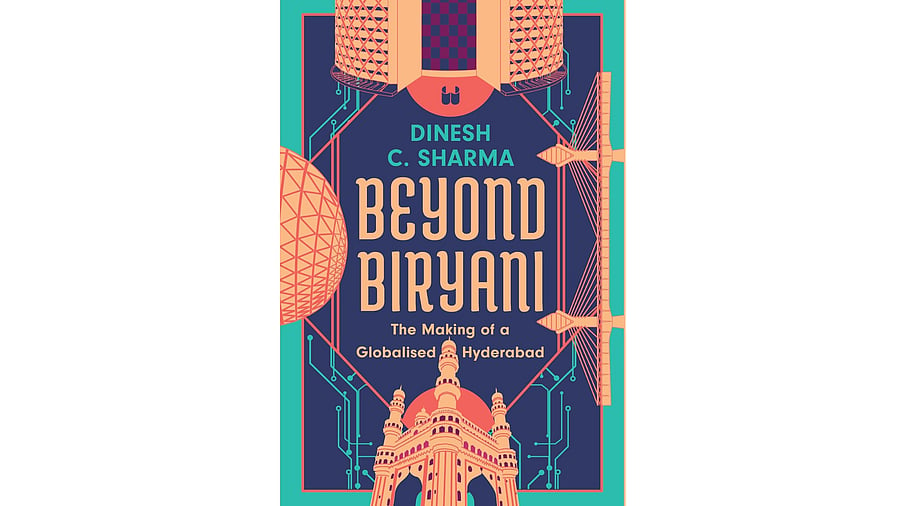
Beyond Biryani
Credit: Special Arrangement
Think biryani and Hyderabad pops up in your head. Talk about pearls, it’s Hyderabad again. Reflect on the Nawabi culture of the bygone era and you have Lucknow and Hyderabad to fall back upon.
The 433-year-old city of Hyderabad that has been synonymous with the Charminar, the Kohinoor diamond, the Golconda fort, the Salarjang museum and the Ganga-Jamuni tehzeeb, is much more than these cliches. Today, it is a melting pot for multiculturalism and diversity as well as a technology hub. Author and journalist Dinesh Sharma deep dives into its hoary past, and sifts through a century of developments to provide refreshing insights into Hyderabad’s transformation.
In the 314-page, scholarly work, Beyond Biryani-The Making Of A Globalised Hyderabad, Dinesh convincingly establishes that Hyderabad has gone far beyond its stereotypical portrayal starting from the teasingly appealing title ‘Beyond Biryani’. Divided into three broad sections and 15 chapters, Dinesh covers the developments from 1908, the year Hyderabad was devastated by the Musi river floods to 2022, when the world and Hyderabad got out of the pandemic. In an easy-to-read, information-filled style, he takes off by throwing light on the great, early 20th-century scientific breakthroughs — from the Chloroform Commission meeting to the discovery of the malarial parasite by the Nobel Laureate Sir Ronald Ross in the marshy backwaters of the Hussainsagar lake, which separated the twin cities of Hyderabad and Secunderabad.
As we read through the initial chapters, it becomes evident that the Qutub Shahi and Asaf Jahi rulers, who pervaded over a rich kingdom inhabited by a majority that was poor and illiterate, had a significant role in laying the foundations for the development of clusters in scientific, industrial, medical and education sectors. The Osmania University, the Osmania Hospital and medical colleges, the Industrial Laboratory (precursor to the Regional Research Laboratories), the Nizamia Observatory and industrial complexes paved the way for the city to pitch strongly for post-independence development. The contribution of Nizams, Mahboob Ali Khan, Osman Ali Khan and SalarJung from the nobility, comes through clearly.
The journey of the city from a sleepy, laidback town to the most happening hub for technology, IT, pharma, healthcare and life sciences has been meticulously researched and presented with little nuggets as well as elaborate stories. That the city is a global hub for vaccines is portrayed nicely.
So is the fact that Agni, the intercontinental ballistic missile was born here. The IT revolution has been captured lucidly. Similarly, the tale of how the public sector IDPL and dedicated scientists like Dr Raja Rao inspired a generation of entrepreneurs in the pharma sector with Dr Reddy’s Labs founded by Dr K Anji Reddy as the crown jewel, is well encapsulated.
That Dinesh grew up in the narrow lanes and bylines of the historical old city, studied in some of the famed educational institutions, including Nizam College and Osmania University, and also worked as a journalist covering several national and international scientific institutions that spawned entrepreneurs, clearly gives him the edge, and the emotional connect with its people, an aspect reflected in the depth of the narrative.
Beyond Biryani is a befitting hat tip to the visionaries, great men and women (quite a few less known and unsung) who have contributed enormously to Hyderabad attaining a global identity and yet retaining its traditional and historical flavour. It should be noted that big metros in India such as Bombay, Calcutta and Madras have undergone a name change in the same period but not Hyderabad. Not yet, at the least. The book will be a rich addition to contemporary writings on the evolution of cities and a ready reckoner for this city of Nawabs and industrialists.
The reviewer is a senior journalist based in Hyderabad.